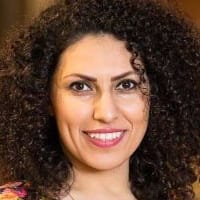Drive to thrive: Reimagining the ways education can work for the greater good
We’re living in times of great upheaval – climate emergency, wars between and within countries, mental and physical health crises.
Some of these kinds of upheavals may seem to be beyond the control of everyday people; nevertheless, it remains true that human beings are both drivers and victims of most of the transformations that destabilise contemporary life.
We know that in order for humanity to survive and thrive, we need to do things differently.
When aiming for a different future, most people look to education as their great hope. Surely, the next generation will do things differently, will be educated differently, and will be supported to make changes.
But for that to happen, we need to do more than simply engage in hopeful thinking. We need to actively reimagine – and rework – the ways education can support our collective thriving.
The Education for a World Worth Living In project brings together research conducted in an international research network, Pedagogy, Education and Praxis (PEP), which for the past 17 years has aimed to understand and change (for the better) educational practice and praxis.
As a network, we recognise education as an important, practical and large-scale forum where we can collectively move towards action for the good of people and the planet.
One of the PEP network founders, Stephen Kemmis, articulates the double purpose of education as: 1) to help us to live well; and 2) to help us create a world worth living in for all.
We believe everything we do in education needs to be framed within those purposes.
Yet these ideas of living well, of living a “good” life, and building the type of world that allows everyone to thrive isn’t new.
Many nations and cultures express similar concepts in their own languages. In Australian Indigenous knowledge, it’s articulated in the Wiradjuri term yindyamarra winhanganha, which has been translated as “the wisdom of respectfully knowing how to live well in a world worth living in”. We’re grateful to have received permission from Wiradjuri Elder Uncle Stan Grant Senior to share this phrase and concept.
The Education for a World Worth Living In project started from the premise that these dual aims – to live well, and to create a world worth living in – although they may be almost universally accepted, look different depending on where you stand in the world.
Our aim is to tease out the nuances of living well and what a world worth living in might be by listening to people in different parts of the world and in different life circumstances.
There’s no wrong or right answer to the questions: What does it mean to live well? What is a world worth living in? What does it mean to live well in a world worth living in for all?
The questions are deliberately open, meaning they can be understood differently, and that the answers to them will be as varied and unique as the people providing the answers.
A listening project
Thus, Education for a World Worth Living In began as a listening project. Renowned physicist and theorist David Bohm suggests that to listen deeply, people must attend to one another sensitively, not only to find what is in common, but to be able to understand differences more fully.
In this way, listening can be generative, and understanding grows and changes. By grounding our work in listening, we hope to move beyond abstract, generic, idealised understandings of living well in a world worth living in into specific, localised, on-the-ground understandings. We need these nuanced understandings in order to think through how education can, in concrete ways, help us realise the dual aims – on the ground, for real people, and in this particular time.
We’re starting to share the findings of our listening project with:
-
an open-access book (the first of two volumes) that details the first 10 studies – ranging from young climate activists in Finland to families who tube-feed their children in Australia
-
a podcast series where we dig into each book chapter to learn more.
This project uses both the language of criticism – how education is stopping us from living well by not addressing systemic issues and reinforcing a world of inequity and unmet needs; and the language of hope – how some educational practices are helping us to live well and to live justly together, both today and in the future.
Although a general sense of anxiety about the state of the world is increasing, the present moment also holds promise. As the studies in this project show, the momentum to act is already here.
Change isn’t something to be imagined in the potential future – it’s already happening in this present moment, and through our everyday educational practices.
We’re finding in our research that there are profoundly human resources that can be harnessed through education – the power to change things (agency); the commitment to act (urgency); and the recognition that things can be better (hope).
Educators and students can be – and are – change-makers.
This article was co-authored with Mervi Kaukko, Tampere University, Finland, and Sally Windsor University of Gothenburg, Sweden.






